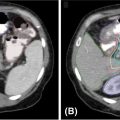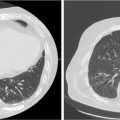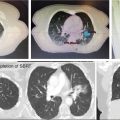3CHAPTER 1
General Overview of SRS and SBRT Program
Stereotaxy refers to a procedure in which points within the brain are localized using an external fixed three-dimensional (3D) reference system such as a rigid head frame to perform a neurological procedure in a minimally invasive manner. The “radiosurgery” is accomplished by directing beams of radiation along any trajectory in this 3D space toward the localized targeted mass of known 3D coordinates. Stereotactic radiosurgery (SRS) is a distinct discipline that uses large doses of highly accurate, precise, and conformal external beam radiation to inactivate or eradicate the localized target mass in the brain or spine without the need to make an incision in a single procedure using image guidance.
Lars Leksell, a Swedish neurosurgeon, developed the term “stereotactic radiosurgery” in 1951 (1) as a novel concept of a noninvasive method to treat lesions that were not accessible by open surgery techniques. He coupled a 200-kV x-ray therapy machine with a stereotactic frame that he designed to treat patients for facial pain. Leksell quickly realized that radiation of a higher energy than 200-kV system available at that time was highly desirable. So, he discarded kilovolt x-rays and between the period 1957 and about 1967, he evaluated the use of 185-MeV protons at the Gustaf Werner Institute in Uppsala, Sweden. Around this time (e.g., 1954), under the guidance of Lawrence and Jacob Fabrikant, the Berkley group used 340-MeV protons from the synchrocyclotron at the Radiation Laboratory to systematically irradiate pituitary gland in patients with advanced cancers. In 1961, Raymond Kjellberg started a radiosurgery program at Harvard Cyclotron Laboratory and treated patients with arteriovenous malformations (AVMs) and skull-based tumors using 165-MeV proton beams. It should be noted that all these facilities were never designed for clinical use; their focus was mainly to pursue physics research.
In the mid- to late 1960s, Leksell and Borje Larsson collaborated to develop the first radiosurgery device, the “Gamma Knife I,” suitable for use in the hospital (2). This unit had 179 cobalt-60 (Co-60) sources distributed in an approximately hemispherical pattern and was placed at Sophiahemmet Hospital in Stockholm in December 1967. By mid-1970s, Gamma Knife I decayed and Gamma Knife II was built that had similar design characteristics of Gamma Knife I. In the era before CT, treatments were limited to patients with AVMs and acoustic neuroma that could be imaged either on angiography or by polymography, respectively.
The first commercially produced Gamma Knife, model U, was installed at the University of Pittsburgh in 1987 (3). AVMs and other skull-based tumors that failed other treatments were considered the initial indications for radiosurgery. The encouraging results of radiosurgery at the University of Pittsburgh for benign tumors and vascular malfunctions led to an exponential rise in radiosurgery cases. Model U presented challenging Co-60 loading and reloading issues. So, over the next years, 4new models were designed. These Models B, C, and 4C were all installed at the University of Pittsburgh over the period ranging from 1996 to 2005. They all had 201 Co-60 sources arranged in a circular fashion and four collimators (4, 8, 14, and 18 mm). A new model of Gamma Knife, LGK Perfexion, was introduced in 2007. The design features of this model are very different from those of the previous models; it has 192 Co-60 sources arranged in a conical, rather than spherical, configuration, and three circular collimators (4, 8, and 16 mm). The latest model of Gamma Knife, the Leksell Gamma Knife® ICONTM, was introduced recently. The ICONTM treatment unit is a radiosurgery device that maintains the same integrity as the PerfexionTM unit with a few additions: kilovoltage cone-beam computed tomography (kV-CBCT) for stereotactic localization and the ability to treat patients without traditional fixation using a mask with real-time tracking of the patient motion through the use of a high-definition motion management (HDMM) system that relies on an infrared marker.
Technological innovation for linear accelerator (linac)-based radiosurgery began in the early 1980s. Four academic centers located in Heidelberg, Montreal, Boston, and Gainesville were at the forefront of this technological innovation research, which at that time consisted mainly of making hardware modifications to the linacs to facilitate the stereotactic frames and improving the targeting accuracy to overcome the shortcomings associated with the treatment couch and gantry rotation characteristics. In 1982, Betti and Derechinsky reported the radiosurgical treatment of a patient using a photon beam from a 10-MV linac with the patient sitting in a movable chair that they designed in-house and wearing the Talairach frame (4, 5). This followed the development of linac-based radiosurgery at the German Cancer Center (DKFZ) in Heidelberg, Germany, where the group used a commercial Riechert-Mundinger stereotactic frame and modified it to mount on the couch of a Siemens linac (6).
Other important works that addressed the inaccuracies that result from the movement of the couch are those by Lutz et al. (7–9) at Harvard and Podgorsak et al. (1987) at McGill University in Montreal (10). Wendell Lutz designed a floor stand to immobilize and precisely position a patient’s head independent of the radiation therapy couch, without reference to room lasers or light field (7–9). Friedman and Bova, at the University of Florida in Gainesville, followed on the work of the Harvard group and designed an isocentric arm that coupled the source and collimator, through a high-precision bearing, to the floor stand to improve the accuracy associated with gantry rotation (11). These efforts led to the development of the first commercial linac radiosurgery system—the SRS 200—manufactured by Philips Medical Systems. This system included the Gainesville floorstand apparatus and CT-based treatment planning system, a Brown-Roberts-Wells (BRW) stereotactic frame, circular collimators with nominal diameter from 10 to 32 mm in 2-mm increments, and other components from Radionics.
Proliferation in linac-based SRS/stereotactic body radiation therapy (SBRT) occurred when the noninvasive relocatable Gill-Thomas-Cosman (GTC) frame was introduced at the Royal Marsden Hospital in London, England, in 1991 (12). With this frame, it was possible to reposition the patient within less than 1.0 mm (3D displacement). Because of the success of using relocatable GTC frame for SRS treatments, Radionics, Inc. manufactured it commercially, and other relocatable frames were developed shortly after the introduction of GTC frame.
Through the mid-1990s, radiosurgery was delivered using circular collimators. Because tumors are not necessarily circular in shape, treatment with circular collimators often resulted in a compromise between plan quality, treatment time, and homogeneity. In the years to follow, significant technological development took place to shape the radiation field. These advances included shaping the radiation field by adding “vanes” to circular collimators (13), development of micro-multileaf collimator (MLC) by the German Cancer Research Center (DKFZ) in Heidelberg (14), miniature multileaf collimator (15), the m3, 52-leaf micro-MLC system developed jointly by BrainLAB GmbH (Heimstetten, Germany) and Varian, and development of a double-focused miniature MLC in conjunction with Wellhofer-Dosimetrie (Schwarzenbruck, Germany) (16).
Development of dedicated linac-based radiosurgery systems soon followed the initiatives described in the previous paragraph. This occurred because linac-based radiosurgery treatments faced controversy, largely on the assertion by some practitioners that linac-based radiosurgery could not match the accuracy of Gamma Knife units. Efforts by different vendors led to the development of dedicated radiosurgery linacs. These systems include a robot-mounted linac, the Cyberknife, marketed by Accuray (Santa Clara, CA); a C-arm multirotation axis linac produced by Mitsubishi Electric Ltd. 5(Tokyo, Japan); a conventional single-energy 6-MV photon with a fixed 10-cm-diameter primary collimator (600 SR, Varian) linac; and a linac with an integrated micro-MLC (Novalis, BrainLAB).
To improve immobilization and targeting accuracy for extracranial treatments, Elekta marketed a product known as Elekta stereotactic body frame, Hamilton and Lulu (17) developed an immobilization box for performing radiosurgery of targets involving and adjacent to the spine, and the German Cancer Center (DKFZ) in Heidelberg also developed a stereotactic body frame for extracranial applications.
Modern linacs such as the TrueBeam STx and Edge (Varian Medical Systems, Palo Alto, CA) and Axesse and Versa HD (Elekta AB, Stockholm, Sweden) provide many capabilities such as kilovoltage and megavoltage orthogonal imaging and CBCT capabilities, flattening filter-free beams, volumetric-modulated arc therapy, and capabilities for gated treatments, which are all well suited for SRS and SBRT.
WHAT IS SRS/SBRT?
The terms SRS and SBRT refer to an innovative, high-precision, noninvasive, image-guided delivery of very high doses of radiation to target a tumor in an extremely hypofractionated treatment (typically up to five fractions). The use of SRS or SBRT facilitates the delivery of highly conformal doses of radiation to a tumor with a sharp dose gradient to avoid irradiating the adjacent organs at risk (OARs). This therefore allows for the delivery of higher radiation doses without increasing toxicity, with a potential for improved disease control and survival.
In recent years, various national professional societies in different countries have provided different definitions for SRS and SBRT. The following gives the definitions of SRS and SBRT given by the different professional societies as indicated.
The American Association of Neurological Surgeons (AANS), the Congress of Neurological Surgeons (CNS), and the American Society for Therapeutic Radiology and Oncology (ASTRO) define SRS as a technique for destroying tumor with highly precise doses of ionizing radiation. This modalities requires a multi-disciplinary team including a neurosurgeon, radiation oncologist and medical physicist and can be performed on a variety of platforms including multi-source Cobalt-60, particle accelerators, or linear accelerators (18).
American College of Radiology (ACR)-ASTRO practice parameter for the performance of brain SRS defines SRS strictly as “radiation therapy delivered via stereotactic guidance with approximately 1-mm targeting accuracy to intracranial targets in 1 to 5 fractions” (19). The ACR-ASTRO practice parameter for the performance of SBRT defines SBRT as follows:
“Stereotactic body radiation therapy (SBRT) is an external beam radiation therapy method that very precisely delivers a high dose of radiation to an extracranial target. SBRT is typically a complete course of therapy delivered in 1 to 5 sessions (fractions)” (20–23). Other professional societies such as the American Association of Physicists in Medicine (AAPM) Task Group Report No. 101 (23), the Canadian Association of Radiation Oncology-Stereotactic Body Radiation Therapy (CARO-SBRT) (24), the National Radiotherapy Implementation Group of the United Kingdom (25), and the German Society of Radiation Oncology (Deutschen Gesellschaft für Radioonkologie, DEGRO) (26) all agree with the above-mentioned definition of SBRT in which they specify the total number of fractionations in more general terms as “one or few treatment fractions.”
The key components of SRS and SBRT procedures are as follows:
Immobilization systems to immobilize the patient during simulation and treatment delivery; multimodality imaging, such as CT, MRI, and PET/CT, to localize the tumor or abnormality and organs at risk within the body and define its exact size and shape; delineation of the target and OAR volume using different imaging modalities; specialized treatment planning using static fields, with or without intensity-modulated radiation therapy (IMRT) techniques, rotational fields, volumetric modulated arc therapy (VMAT) plans, or multiple robotically directed beams, that results in a highly conformal dose of radiation to the target volume and a steep dose fall-off to within millimeters for SRS and subcentimeters for SBRT treatments; stereotactic target localization and delivery of high doses of radiation with high levels of targeting accuracy, facilitated by imaging and/or placement of fiducial markers, using gamma ray, high-energy x-ray, or particle beams; motion assessment techniques such as four-dimensional (4D) CT, breath-hold, and fluoroscopy to assess organ motion (e.g., respiration-induced motion) during simulation, management of motion using techniques such as breath-hold, abdominal compression, or immobilization devices 6such as body fix, and use of delivery techniques such as beam gating or tumor tracking to ensure that the planned dose is delivered to the target; and strict protocols for quality assurance (QA) because SRS and SBRT demand a level of accuracy that surpasses the requirements of conventionally fractionated radiation treatment or IMRT treatments.
DISEASE SITES TREATED WITH SRS/SBRT
In general, SRS or SBRT is not indicated for cancers that are widely disseminated throughout the body. When considering SRS or SBRT for a given indication, various factors are taken into account before decisions are made on whether a given type of cancer should be treated with SRS or SBRT. These considerations include, for example, (a) whether the patient and the tumor meet the selection criteria developed for the treatment of such indications; (b) whether the cancer should be treated using single fraction or multiple fractions; (c) types of imaging studies that are needed for the identification of the tumor (i.e., CT, MRI, PET-CT); (d) types of fusion, rigid or nonrigid, that are relevant for the delineation of the target volumes; (e) dose fractionation for treatment planning; (f) dose constraints for critical structures; (g) whether motion management will be important; (h) appropriate platforms (such as linac-based, Cyberknife, Gamma Knife), techniques (e.g., intensity-modulated radiosurgery [IMRS], VMAT, motion management), and field arrangements (for linac-based SRS/SBRT) to be used for the treatment of the cancer; (i) types of imaging studies for localization during setup and treatment; (j) follow-up imaging protocols; (k) outcome data; (l) quality of life (QOL) issues; and (m) safety considerations.
Intracranially, there are many indications that are currently being treated with SRS including, for example, AVMs, acoustic neuroma, meningiomas, pituitary adenoma, vagal schwannoma/paragangliomas, brain metastasis, anaplastic astrocytoma/glioblastoma multiforme (GBM), trigeminal neuralgia, cochlea, thalamotomy, and pallidotomy. Extracranially, many disease sites are currently being treated using SBRT procedures. These areas include but are not limited to the following: head and neck, lung, pancreas, kidney, adrenal gland, liver, prostate, gynecological sites, spine, and oligometastases.
A detailed discussion on the technical and clinical considerations for treating the disease sites mentioned earlier is given in Chapters 4 to 7 and 10 to 20.
GENERAL STATEMENTS OF CLINICAL OUTCOMES FOR SRS/SBRT
SRS/SBRT technique facilitates delivery of high doses of radiation to the target volume in one to five fractions with acceptable toxicities to OARs. Faster treatment time, higher accuracy in the delivery of high total dose to the target with acceptable toxicities to OARs, and patient comfort all contribute to a better clinical outcome. Because of this, facilities across the United States and all over the world are adopting this technique to treat different disease sites.
Lung cancer is one of the deadliest diseases and common cause of cancer death in men and women in the United States. Lobectomy is considered to be the standard treatment for early stage non–small-cell lung cancer (NSCLC). However, many patients are not candidates for surgery because of aging and/or other comorbid conditions. SBRT has demonstrated excellent local control and increased survival with minimal toxicity in patients with early stage NSCLC and is now considered to be a curative alternative to surgery for patients with early stage NSCLC, for elderly patients with severe heart disease, for patients in poor health, and for patients with early stage but inoperable NSCLC tumors.
Metastatic tumors are the most common malignancy of the spine and represent more than 90% of the spinal tumor cases. It has also been estimated that in 5% to 10% of all cancer patients, metastatic disease to the spine develops during the disease. Spinal metastasis can cause pain, compression fractures, and spinal cord compression. Although these symptoms are typically treated by external-beam radiation therapy (EBRT) and surgery, up to 50% of patients will require further intervention for recurrent pain. However, EBRT can cause problems due to its irradiation of healthy tissue and the spine itself. As a result, support has grown for the use of SRS, which can deliver a highly conformal and large radiation dose to a tumor while sparing the spinal cord. One study by Heron et al. (27) evaluated pain control, neurological deficits, toxicity, and tumor recurrence in a group of patients who received CyberKnife radiosurgery in either single or multiple sessions. The authors found that pain reduction and relief was about 73% for all patients regardless of whether they were treated in a single session or multiple sessions. However, pain control was significantly higher for 7single-session patients (100%) than for multisession patients (88%) for all measured time points up to 12 months. The authors found that tumor control was superior in the multisession group. Specifically, at 2 years, long-term radiological control for all multisession patients was 89% and that for single-session patients it was 61% (with a p value of <.001). In addition, at 2 years, tumor control probability in the multisession group was 96% compared with 70% in the single-session group. Patients in both groups were equally likely to experience improved neurological functions at each evaluation time point up to 2 years. Specifically, at 1 and 2 years, 71% of single-session patients and 79% of multisession patients had improved neurological symptoms. For toxicity, the overall rate of any adverse event was similar in both groups (4.6% in the single-session group and 5.9% in the multisession group). The median survival for the entire cohort was 13 months (11 months for single-session patients and 18 months for multisession patients). Up to the first year, single-session radiosurgery controlled pain better than multisession radiosurgery, although the single-session re-treatment rate was significantly higher. Local control and 1-year survival rates were significantly better for multisession patients.
Published literature shows that there are good outcomes with SRS and SBRT treatments of other disease sites such as primary and metastatic tumors to the liver, kidney, pancreas, and prostate.
LAUNCHING A QUALITY SRS/SBRT PROGRAM
Launching a quality SRS/SBRT program requires the consideration of many features. The following provides an overview of them.
Establishing the Goals
The drive to start a comprehensive SRS and SBRT program requires a thoroughly vetted and comprehensive evaluation of resource needs, an established set of goals, a stated mission, as well as an assessment of program feasibility. This evaluation requires a multidisciplinary dialog with a common set of stakeholders including institutional and clinical leaders, primary care providers, referring physicians, and allied health professionals, as well as patients and relevant advocacy groups.
SRS/SBRT is very unlike conventional two-dimensional (2D) and 3D radiation therapy and as such requires a raft of items for implementation. Before initiating the program, the principals should ask the following questions:
• What are the perceived needs?
• What are the objectives of the program?
• For whom and why is there a need for the program?
• What are the practice goals? What are the institutional goals?
• Is there a community need? Are there patient advocacy groups that should be engaged?
Once the above-stated questions have been comprehensively answered, the decision can be made whether to proceed with the establishment of the program.
The SRS/SBRT Team and Their Credentials
The establishment of a successful SRS/SBRT program starts with the formation of a specialized team of multidisciplinary professionals who will be involved in the care of the oncology patient. Members of this team should be appropriately trained in all aspects of radiosurgical planning and delivery procedures/techniques/processes. This multidisciplinary team should consist of, minimally, a radiation oncologist, a medical physicist, two radiation therapists (RTTs), a nurse with radiosurgical experience, and a surgical and/or medical oncologist. Optional but equally important are supportive services such as administrative, information technology (IT), social work, and nutritional services. Because of the narrow therapeutic ratio of radiosurgery, this multidisciplinary team should be actively involved in the development of a quality management (QM) program and a continuous quality improvement (CQI) program. Task Group 100 of the AAPM recommends that before launching a clinical program, the multidisciplinary team of professionals involved in the care of patients should jointly develop a process map of the specific treatment process, perform a failure modes and effect analysis for every step in the process, and develop a risk-based QM program (28). Details of how to set up such a prospective risk-based QM program are given in Chapter 3. Maintenance of an ongoing risk-based quality-managed program will ensure that the patient will receive the prescribed treatment correctly.
8Radiation oncologists responsible for the SRS/SBRT treatments should have certification in radiation oncology or therapeutic radiology by an appropriate recognized certification board and/or satisfactory completion of a residency program in radiation oncology approved by the Accreditation Council for Graduate Medical Education (ACGME) or other similarly recognized accreditation authorities. If the radiation oncology residency training did not include SRS or SBRT training and direct clinical experience, then specific training or mentoring should be obtained in SRS and SBRT before performing any radiosurgical procedures. In addition, the radiation oncologist should undergo vendor-specific delivery systems training. It should be noted that radiation oncologists are also the “authorized users” for the SRS/SBRT treatments that are delivered using devices that use radioactive isotopes such as Co-60 sources. ACR-ASTRO practice parameter for radiation oncology provides guidance on the credentials for radiation oncologists for practicing SRS/SBRT (29).
For physicians completing the mentorship-based experience program, it is generally recommended that 5 to 10 proctored cases in each disease site with documented sign-off of competencies should be the norm. It is also important that there is an ongoing commitment to a peer review process that evaluates each patient and his or her treatment plan prior to treatment.
Similarly, the medical physicists involved in the SRS/SBRT procedures should be qualified medical physicists capable of performing SRS/SBRT treatments independently. They should be certified by an appropriate recognized certification board such as the American Board of Radiology with specialties in therapeutic radiology (or previous medical physics certification categories of radiological physics and therapeutic radiological physics). If their training did not include SRS or SBRT training and direct clinical experience, then specific training or mentoring should be obtained in SRS and SBRT before performing any SRS/SBRT procedures. Such training should be documented. Documented evidence of knowledge is demonstrated when the physicist either has accomplished the following or can perform the following independently: (a) generated at least 15 treatment plans for each disease site, intracranial and extracranial, using different techniques such as IMRS, VMAT, cone-based planning, or others on appropriate delivery platforms such as linacs, Tomotherapy, CyberKnife, or Gamma Knife; (b) knowledgeable in all aspects of small-field dosimetry; (c) independently able to perform QA measurements on equipment that are slated for SRS/SBRT treatments following the guidelines recommended by various national professional societies or international organizations such as International Atomic Energy Agency (IAEA) and vendors; (d) independently able to perform patient-specific QA measurements for intracranial and extracranial treatment plans using commercially available equipment; (e) knowledgeable about dose constraints for critical structures as well as prescription doses for the disease sites to be treated using SRS/SBRT; (f) familiar with CT-, MRI-, or PET-CT-based cross-sectional anatomical or functional imaging; (g) knowledgeable about the performance characteristics and operational aspects of various platforms that are used to deliver SRS/SBRT treatments; and (h) knowledgeable about various immobilization devices that are used for SRS/SBRT treatments.
The therapists should be certified in radiation therapy by the American Registry of Radiologic Technologists (ARRT) or a similar organization. They should be well trained on the following: (a) knowledgeable on the operational aspects of the platform used for the delivery of SRS/SBRT treatments, (b) experienced with all imaging protocols and procedures that are used to localize the target before treatment is delivered, and (c) knowledgeable about all the policies and procedures that have been established by the organization for the treatment of SRS/SBRT patients.
Radiosurgery and SBRT are rapidly changing fields with processes that continue to evolve as experience grows, particularly for extracranial sites. It is important that there are processes in place to ensure that all team members are up to date on the latest indications, prescription dose to the target and dose constraints to the OARs, QA, and patient safety recommendations.
Resourcing the Program
Resourcing is essential to the overall success and safety of an SRS/SBRT program. It is important that there is institutional commitment at the outset and on an ongoing basis to maintain a safe, high-quality program. The cost of initiation and implementation is substantial and will include the acquisition of the following:
• Specialized linac with kilovoltage imaging capabilities or modification of an existing unit that is desirable.
Stay updated, free articles. Join our Telegram channel

Full access? Get Clinical Tree








